I’d lamented about rained-out local creek smallmouth fishing all summer long. High water had made fish tough to find and often posed a wading hazard. But just an hour’s drive north of my home, the crystalline cool flows of the Buffalo National River resembled something closer to normal summer conditions. Ever since the fly rod — an elegant tool for a more civilized angler — found its way to my hand last fall, I’d dreamed of a trip to the iconic Buffalo River.
The Buffalo is the archetype of Arkansas’s Ozark streams. Limestone filtration makes for moonshine-clear riffles with dazzling aquamarine pools. There are towering bluff lines and abundant wildlife, and within the Buffalo River watershed, and along the creek itself after canoe season and far from the public access points, you can find that most elusive of natural treasures — blessed solitude.
Calm winter evenings feature an aching, cold steel quiet that cuts nearly to marrow. There is a sentiment in the silence, a desolation that speaks with old and nearly forgotten languages. And then you might hear elk bugle from a shadowed hollow, the last flickers of an autumn inferno licking at the loins of a confident bull. The screaming roar rouses Pleistocene memories and vestigial urges in any listening human. It’s an invitation, an enticement to rejoin the primal dance. John Muir heard the mountains themselves calling. You can hear that, too, if you listen. But it’s often by cervid proxy here, along the Buffalo River.
In summer, the river solitude is melodic with the harmony of neotropical songbirds and the hushed movements of secretive creatures. Summer tanagers flash through the canopy with intense singing to match their bold scarlet plumage. Velvet-tailed timber rattlesnakes glide in scaly silence over lichen covered rocks and through the shadowed forest of white oaks and shagbark hickories. Under the stars, a burbling river is accompanied by leopard frogs and Katydids as whip-poor-wills trill in melancholy tones and great horned owls punctuate the night with haunting flutes.
The Buffalo in her lacy green summer dress had been on my mind at least weekly through the autumn, through the dark dead days of winter, and the anticipation grew with each warm southern breath of spring. But June, July and August came and went and the Buffalo remained just a summer dream. Due to all kinds of obstacles laid down by ordinary everyday life, my only summer 2016 visit to the Buffalo came in early September. It was a family day trip with the noon sun blazing down on a hole of water that featured its own parking lot complete with hers and his restrooms.
More Like This
But just a little Buffalo River is better than no Buffalo River.
Though it’s known far and wide as an epic if hardly formidable float during the spring rains, the Buffalo is an under appreciated smallmouth bass fishery. I’d caught a few dandy fighters through the years, but rumors of 20-inch brownies were the fuel behind my nearly year-long Buffalo River obsession. And this one September trip to the Buffalo has me already looking ahead to summer 2017.
Spoiler: I did not catch a 20-inch brownie. But I did catch a brownie of significance.
As the wife, daughters and granddaughter frolicked in spring-fed creek water, I plied green depths and copper shallows with the fly rod. It was the wrong time of day. It was a public access point. Summer was nearly over. But the 16 1/2 inch tiger-striped bolt of bronze that hit the wooly bugger with a nearly audible thump dissolved all of that. The 6-weight bowed in reverence as the fish lunged for safety in boulders that had rolled from sheer bluffs above eons ago. Once, twice, three times the drag ticked with a nervous energy as I prayed strength for the leader and steadfastness for the hookset.
And then the storm passed. The smallmouth was in the shallows. Ozark light, bent and wrinkled in the water, washed over fierce eyes and golden fins. Current rippled between my fingers as I gently removed the hook and supported the fish in a pebbled shoal. Gills pumped in earnest as she caught her liquid breath. Pectoral fins whirled and her tail took on a slight bend as she prepared to fight for her freedom again. This was when I set her free.

Just a few downstream miles from where I caught my best ever smallmouth, Big Creek joins the Buffalo. Big Creek carves through a large portion of my heritage. It’s headwaters trickle down a hollow directly across the road from my father’s boyhood home and the general store built by my grandparents now owned by my uncle. The creek winds through valleys and flows into the Buffalo River just a few miles from the town of Mt. Judea. The final resting place for my paternal grandparents, an aunt and uncle, countless cousins and other blood kin is the Mt. Judea Cemetery. Big Creek carries more than water to me.
Less than 10 miles from the confluence of Big Creek and the Buffalo, an industrial hog farm spreads manure on pastureland underlain with porous limestone. A limestone foundation, also known as Karst topography, is why the Ozarks are what they are. It’s why the hills are known for caves, sinkholes and limpid water. Its presence guarantees that any liquid poured on the ground will end up in the groundwater and in the creeks. And it’s the reason that Newton County is the poorest of locations for an industrial hog farm.
But that didn’t stop the construction of said farm. And, for various complex cultural reasons as well a simple economic reasons, the people of Mt. Judea and all of Newton County were little detriment either.
The farm houses around 2,500 sows and generates 1.5 million gallons of liquid hog manure annually, and it threatens a county economy that depends heavily on the one million plus tourists visiting the Buffalo River and surrounding area every year. Tourism accounts for 20-30 percent of Newton County’s total economy while number of employee on this farm won’t break double digits. Seems like a lopsided and easily discerned dichotomy. Funny how heavy support from big money tilts the scales.
You can read more about the farm here and its potential (and likely) threats to the environment and people here.
As more than just a fan of river, the region, and the people, I’ve taken an active role in bringing this issue to the public and was involved with a recently finished documentary called “Downstream People.” We’ve launched a crowdfunding campaign on Indiegogo to help us recoup expenses involved, provide avenues for viewing the video next spring and also support production of new documentaries that tell the stories about connections between a place and its people. Please visit the site, view the trailer, and consider making a small donation to further the cause.
They built a hog farm within the watershed of the Buffalo National River. If they think so little of the irreplaceable ecosystem and pristine wildness of our first national river, what does it mean for the countless creeks and streams in our country without such distinguished designation?




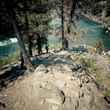

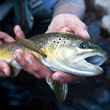
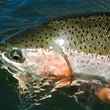



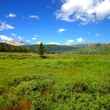









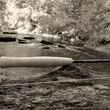







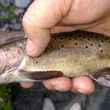

Comments
Ramona Schriber replied on Permalink
Just bought a home in Mt. Home and this is very disturbing. It is a winter get away from the frozen waters of interior Alaska. I will be monitoring this developing story. Perhaps the locals don't understand what a jewel they have in these productive systems.
Bill Crumrine replied on Permalink
Well, what should we expect, considering that the "Ghosts" of the Clintons still haunt Arkansas. after all look how Tyson Foods fouled some Arkansas state river with chicken manure. The old cliché big money walks and bull$..t talks, still rings true. What a sad commentary!!! Send this article to American Rivers and see if they can help raise awareness of this problem. Sounds like something former HUD secretary and San Antonio Mayor King Henry I Cisneros would endorse for uncontrolled urban sprawl, as he and the Clintons are all in bed together. I have always said and will continue to say until I draw my last breathe, Big Business, Big Government, and Big Labor are all in bed together and we know what a threesome makes.
Twitch Davis replied on Permalink
We are in the midst of fighting the same problem in the karst topography of our NE IA region of the Driftless. We understand your pain and frustration and fear!! Duh duh duh.
http://www.thegazette.com/subject/news/government/pristine-valley-in-all...
Pages